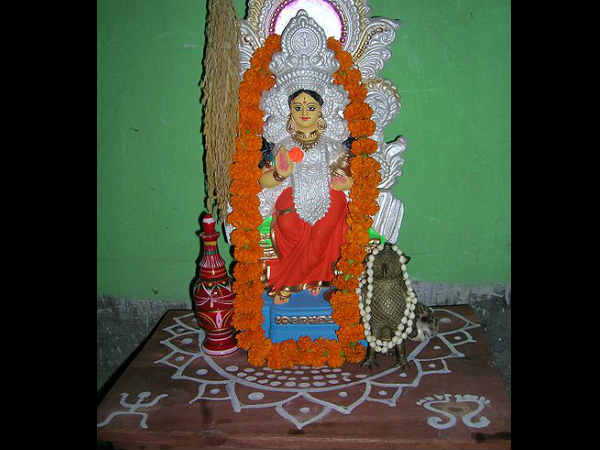Just In
- 4 hrs ago

- 8 hrs ago

- 10 hrs ago

- 11 hrs ago

Don't Miss
- Sports
 DC vs SRH, IPL 2024: Former India Coach John Wright Trolls RCB after Shahbaz Ahmed knock
DC vs SRH, IPL 2024: Former India Coach John Wright Trolls RCB after Shahbaz Ahmed knock - News
 Lok Sabha Elections 2024: BJP's Moradabad Candidate Kunwar Sarvesh Kumar Dies Day After Polling
Lok Sabha Elections 2024: BJP's Moradabad Candidate Kunwar Sarvesh Kumar Dies Day After Polling - Movies
 When Aishwarya Rai Gives ‘Classy Slap’ On Journalist’s Face For Asking Her To Pose Nude, Watch Video
When Aishwarya Rai Gives ‘Classy Slap’ On Journalist’s Face For Asking Her To Pose Nude, Watch Video - Education
 Assam Class 10 Result 2024 Declared: Anurag Emerged as the Top Performer With 593 Marks
Assam Class 10 Result 2024 Declared: Anurag Emerged as the Top Performer With 593 Marks - Finance
 2 Tata Group Dividend Stocks To Buy/Sell After Q4 Results, Dividend Announcement
2 Tata Group Dividend Stocks To Buy/Sell After Q4 Results, Dividend Announcement - Automobiles
 Tata Altroz Records a 55% Sales Growth in March 2024
Tata Altroz Records a 55% Sales Growth in March 2024 - Technology
 Best Noise-Cancelling Earbuds Under Rs 5,000: CMF Buds Pro, Redmi Buds 5, Realme Buds Air 5, and More
Best Noise-Cancelling Earbuds Under Rs 5,000: CMF Buds Pro, Redmi Buds 5, Realme Buds Air 5, and More - Travel
 Journey From Delhi To Ooty: Top Transport Options And Attractions
Journey From Delhi To Ooty: Top Transport Options And Attractions
Why Bengalis Do Kojagari Lakshmi Puja?
Different communities in India celebrate Lakshmi puja on different dates or 'tithis'. A majority of Northern India honours the Goddess of wealth on the festival of Diwali. In the south we have the Var Lakshmi puja. Eastern India however, has a totally different concept of Lakshmi puja. The Bengali puja for the Goddess of Prosperity is called Kojagari because it comes on Kajagari purnima (full moon). There is an interesting story behind it. Rituals associated with Kojagari Puja

What is Kojagari puja?
Once upon a time, there reigned a righteous king in Bengal. He promised his artisans that he would buy any object made by them if it remained unsold. It so happened that one artisan made an idol of Alakshmi or the Goddess of Poverty that remained unsold for obvious reasons. But the King, true to his word bought the idol and installed it in his temple.
As Lakshmi and Alakshmi cannot reside together, prosperity left the kingdom. The desperate king appealed to Lord Dharma for help. He suggested that the queen does the Kojagari Lakshmi vrat on the full moon night of Ashwin month. The queen kept this fast and did the Lakshmi puja as per the rituals. As a result, the statue of Alakshmi melted away and the Goddess of prosperity reigned supreme in the kingdom.
When does this puja happen?
This puja must take place on Kajagari purnima that comes in the month of Ashwin. It is the first full moon after Durga puja ends.
The Specialty of Kojagari Lakshmi puja:
This Bengali puja has some highlights. Apart from keeping the fast or vrat there are some interesting rituals associated with this puja.
First and foremost, it always happens at night. This because the story goes that the queen who started this puja had stayed awake all night to please Goddess Mahalakshmi.
Alpana (a special type of rangoli) is a part of all Bengali pujas. However, in Lakshmi puja it assumes special significance. A paste of powdered rice is used to draw goddess Lakshmi's feet. These pairs of feet are always shown coming into the house and never leaving it. The symbolism of this alpana is that Goddess Lakshmi or in other words prosperity must never leave the house.
The offerings that are given of Goddess Lakshmi can sometimes shock you. Apart from the whole fruits, rice, grains, gold and clothes that are usually offered to the gods, some families over fish to Goddess Lakshmi. The Bengalis believe that fish is the fruit of the river and therefore it is sacred. Some families have a tradition of offering Hilsa fish to the Goddess while others offer different kinds of fish like Rohu, Koi, Tangra etc.
Lakshmi puja is an integral part of the Indian culture and takes place in many forms. This particular form of Kojagari punima is supposed to banish poverty and usher in prosperity.
-
 faith mysticismThe Great Devotees Of Goddess Durga
faith mysticismThe Great Devotees Of Goddess Durga -
 anecdotesHow Lord Hanuman Became So Powerful?
anecdotesHow Lord Hanuman Became So Powerful? -
 festivalsPhulera Dooj: A Festival Dedicated To Lord Krishna
festivalsPhulera Dooj: A Festival Dedicated To Lord Krishna -
 festivalsHindu Auspicious Days In The Month Of March
festivalsHindu Auspicious Days In The Month Of March -
 anecdotesThe Story Of Lord Vishnu, Narad Muni And The Rich Merchant
anecdotesThe Story Of Lord Vishnu, Narad Muni And The Rich Merchant -
 festivalsMaha Shivratri Dates, Stories, Benefits, Puja Vidhi And Vrat Vidhi
festivalsMaha Shivratri Dates, Stories, Benefits, Puja Vidhi And Vrat Vidhi -
 anecdotesMaha Shivratri 2020: The Story Of Sacred Bull Nandi
anecdotesMaha Shivratri 2020: The Story Of Sacred Bull Nandi -
 anecdotesHow Hanuman Led Tulsidas To Lord Rama
anecdotesHow Hanuman Led Tulsidas To Lord Rama -
 festivalsThe Significance Of Janaki Jayanti
festivalsThe Significance Of Janaki Jayanti -
 festivalsYashoda Jayanti 2019, Story, Rituals and Benefits
festivalsYashoda Jayanti 2019, Story, Rituals and Benefits -
 festivalsMasik Durgashtami, When Goddess Mahagauri Showers Her Blessings
festivalsMasik Durgashtami, When Goddess Mahagauri Showers Her Blessings -
 festivalsMasik Karthigai Vrat Story, Puja Vidhi, Fasting Rules and Benefits
festivalsMasik Karthigai Vrat Story, Puja Vidhi, Fasting Rules and Benefits


 Click it and Unblock the Notifications
Click it and Unblock the Notifications



